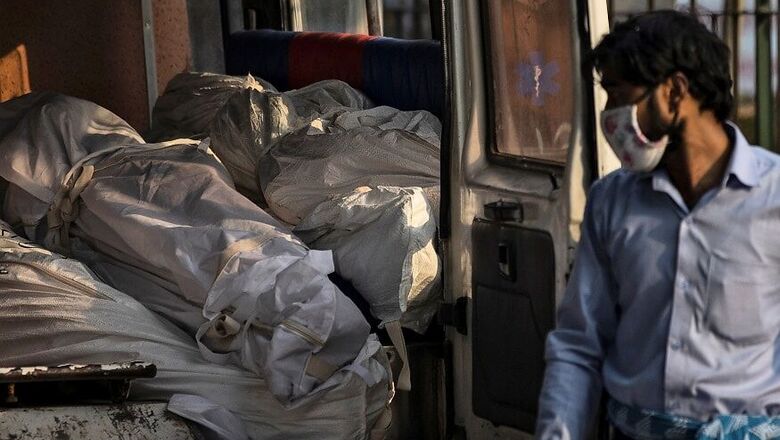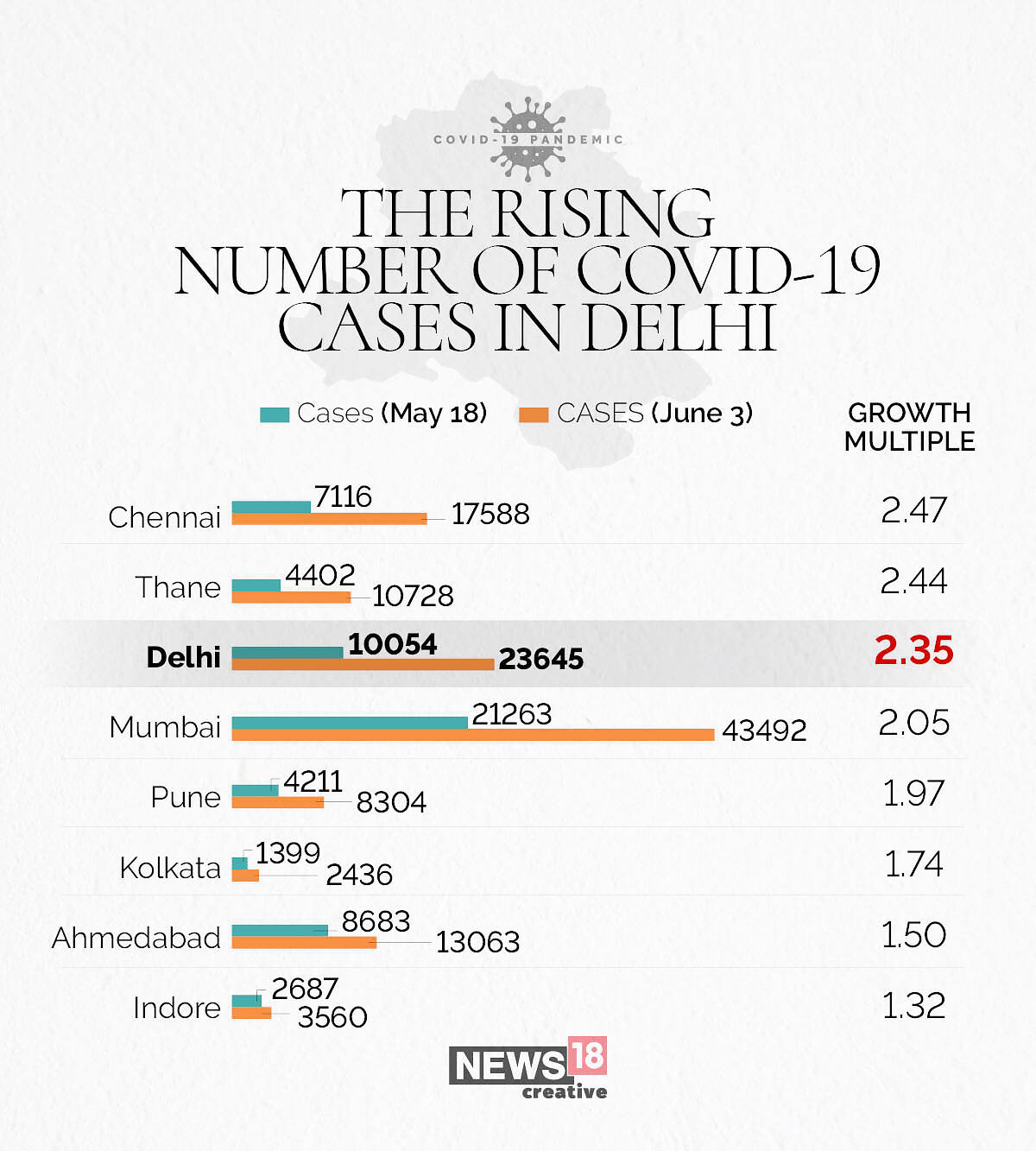
views
Delhi has seen a massive surge in Covid-19 cases in the last couple of weeks. From 10,554 cases till May 19, the number has more than doubled and has crossed 25,000 on June 5. The capital has recorded, on an average, 1,198 cases every day from May 28-June 3 and barring June 1, witnessed 1000-plus cases each day.
It reported its highest spike on June 3 with 1,513 cases which was also the first time in two months that Delhi had recorded more number of cases on any single day than Mumbai, which registered 1,276 cases on Wednesday.
Delhi is the only state among the top four in terms of case-load which has seen a significant rise in the number of cases. As of June 2, its Compounded Daily Growth Rate (CDGR) of 6.26 per cent was higher than the national average of 4.67 per cent. The corresponding CDGR for Maharashtra was 4.05 per cent and Gujarat – 2.5 per cent.

The cases in Delhi have increased 2.35 times since the curbs were relaxed for Lockdown 4, higher than the proportionate increase in Mumbai and Ahmedabad during this time.
From the External Affairs Ministry to the Niti Aayog, from the LG office to the Ministry of Defence – the virus has started to affect a large part of the government machinery, too, in the capital.
The Delhi government has attributed the rise in cases to the higher testing numbers but an analysis of the Positivity Rate (percentage of people who test positive amongst those tested) tells a different story. The average Positivity Rate in the week ending May 31 rose to 14.7% from 10.8% the week before.
Alarmingly, the Positivity Rate has shot up to 25.7% for the past week starting May 28 – the highest in the country! This basically means that one in every four people tested are turning out positive in Delhi. The Daily Positivity Rate has been above 17% since May 28 – 17.1% on May 28, 21% on May 29, 20.1% on May 30 and 37.7% on May 31. Testing numbers are still awaited for June 1-June 3.
Seventeen districts in India have recorded a Positivity Rate of 20 per cent or more between May 26 and June 1 – as many as 9 of these, the maximum for any state in India, were from Delhi. South East Delhi district had a Positivity Rate of 43.9 per cent while North East Delhi and West Delhi clocked 36.5 per cent and 34.1 per cent respectively.
The surge in cases in Delhi has also led to a doubling of the Containment Zones in the capital in the last 16 days. From 73 Containment Zones on May 18, the number has risen to 163 on June 3. North Delhi has the highest – 30 while South West Delhi has 29 of these zones.
While the rate of growth of cases is worrisome, what is even more distressing for the Delhi government is the corresponding rise in the number of Covid-19 deaths. Delhi had the second-lowest Mortality Rate of just 1.59 per cent amongst the severely affected major cities of India (only after Chennai) on May 20.
That number has increased to 2.56 per cent in a fortnight. While it is still lower than the national average of 2.8 per cent, the rise is significant and a matter of huge concern. The data, however, has repeatedly been brought to question with the government being accused of under-reporting deaths.

Delhi’s Mortality Rate has seen a rise of 61.01 per cent, by far the highest amongst the 10 cities analysed. The rise in other cities has generally not exceeded 10 per cent whereas cities such as Mumbai, Surat, Pune and Kolkata have seen a fall in their Mortality Rate numbers.
Usually, as more tests are conducted and more cases are reported, there is a drop in the Mortality Rate as cases rise at a much faster rate than deaths and a large percentage of cases are asymptomatic or mild. Thus, this substantial rise in the number of deceased becomes a big concern for the government.
Delhi’s tests/death ratio has also reduced by more than half from 854 on May 20 to 402 on June 2 – an indication that the proportionate increase in the number of deaths has been higher than the increase in the number of tests over the last couple of weeks.
Chief Minister Arvind Kejriwal last week stated that the situation was under control and there was no need to panic as long as the number of deceased did not rise at an alarming rate.
But with most of the restrictions now lifted, a further rise in the number of cases will put pressure on the health infrastructure of the city, which is already under strain.
Delhi may have to do a bit more than just sealing its borders for a week and making 7-day home quarantine compulsory for all arrivals in the city.
The government has done a commendable job so far but with the opening up of the lockdown, it is now up to the people of the city to play their part.
Many officials have suggested that laxity and casual attitude of the people after the lifting of many restrictions has been a major reason for the recent surge in cases in the city.
Even as the cases spike, massive crowds, barely practising any social distancing flocked various markets in the city on June 1 – the first day of Unlock 1.0.
The next few weeks will be crucial for Delhi. If the capital is to win this battle against Covid-19, the people have to assume responsibility and play their role complementing the efforts of their government.




















Comments
0 comment